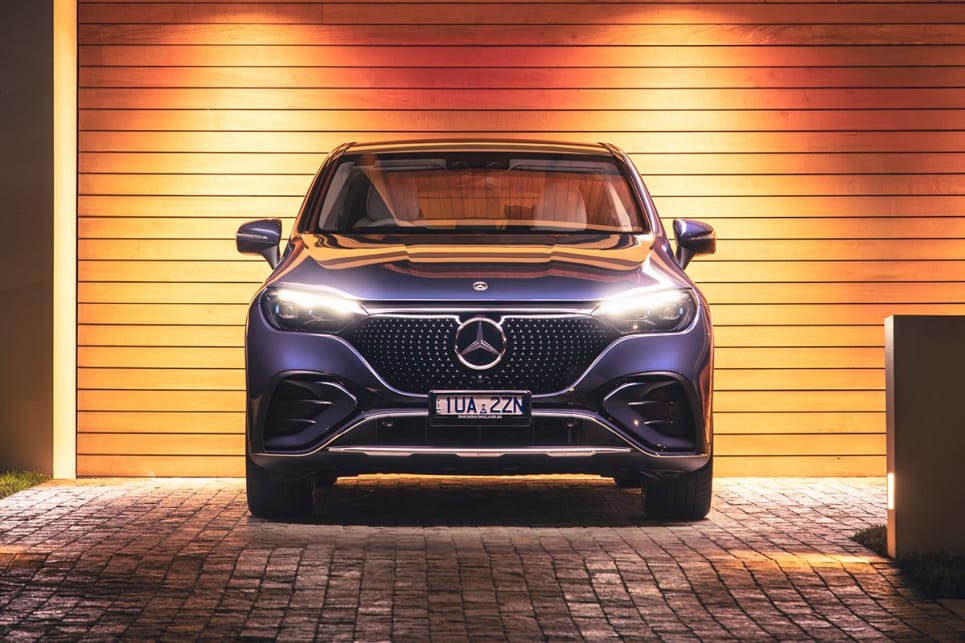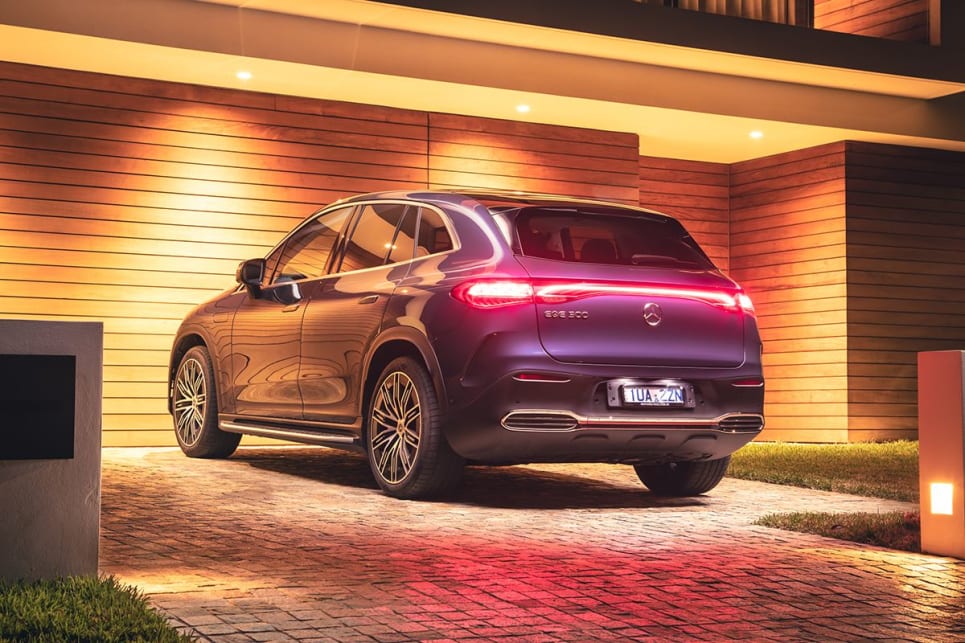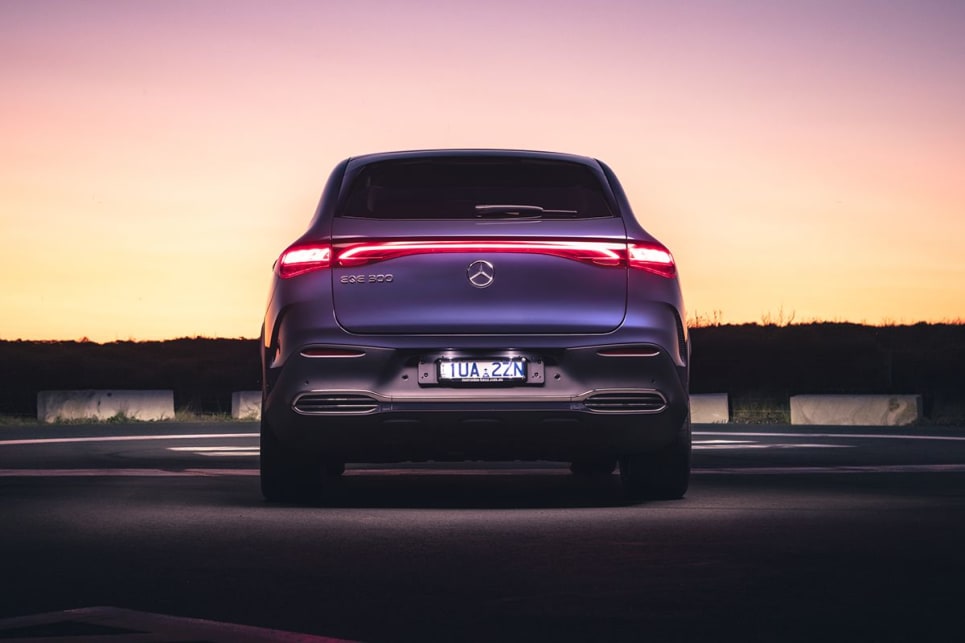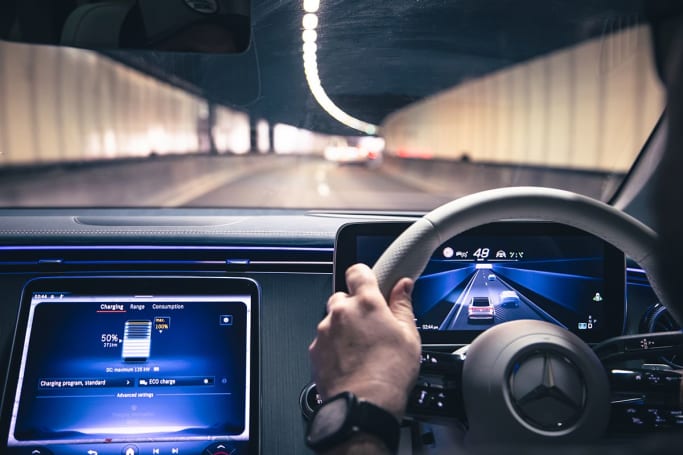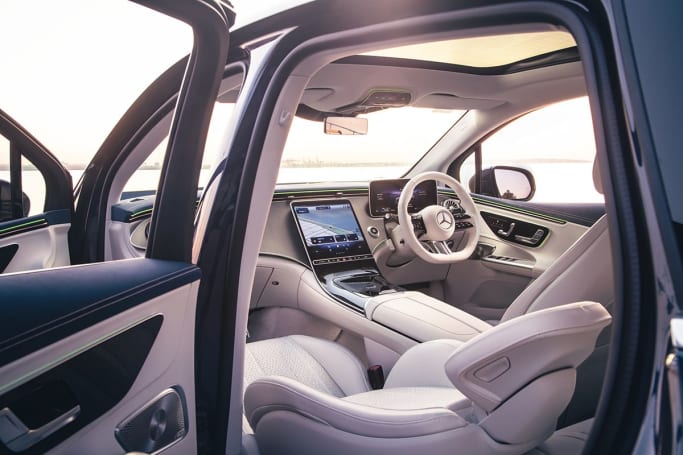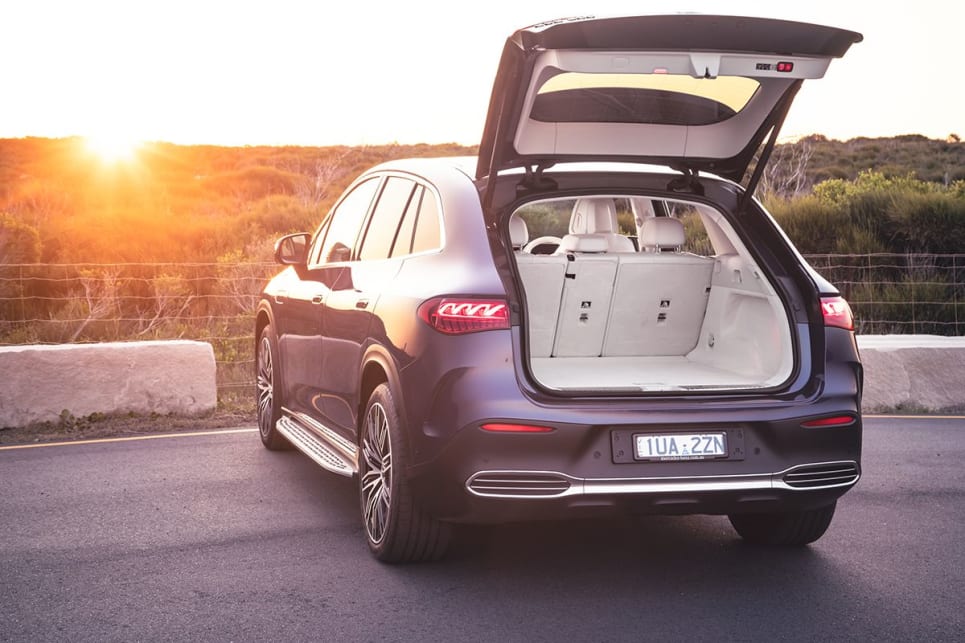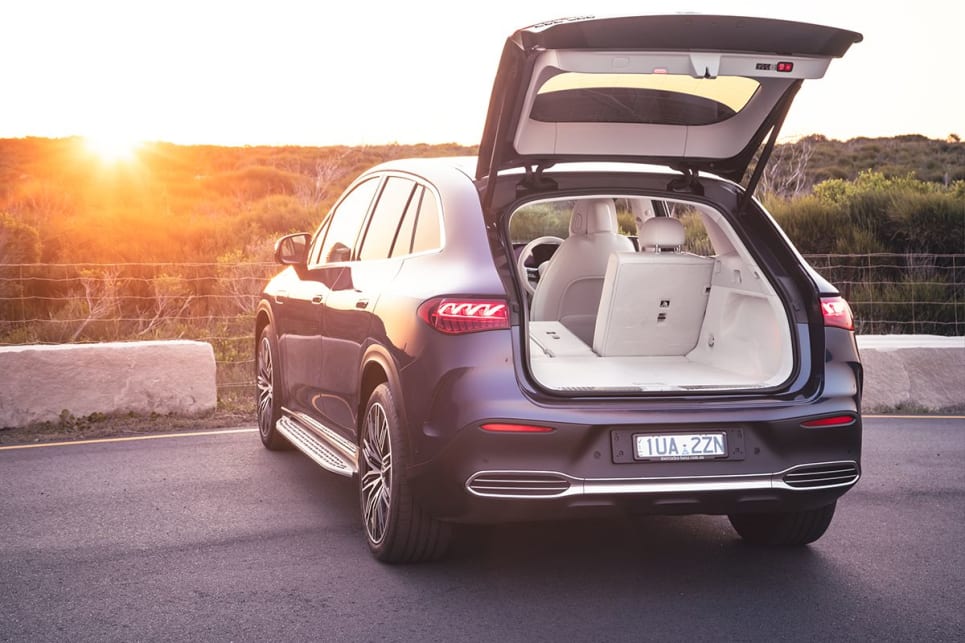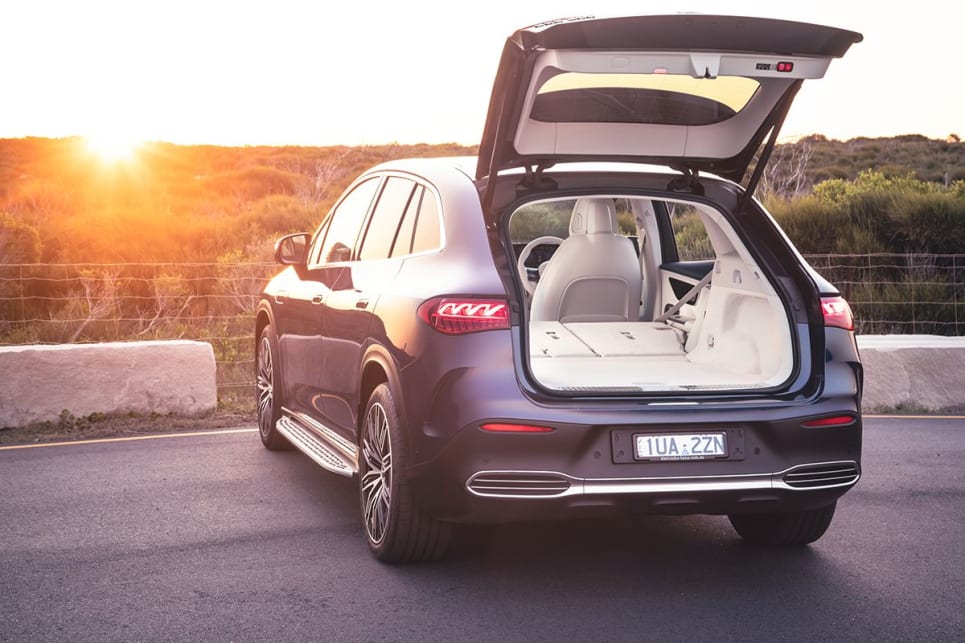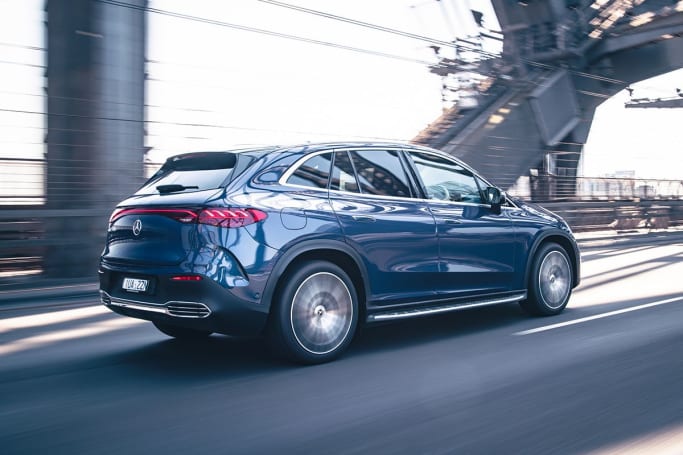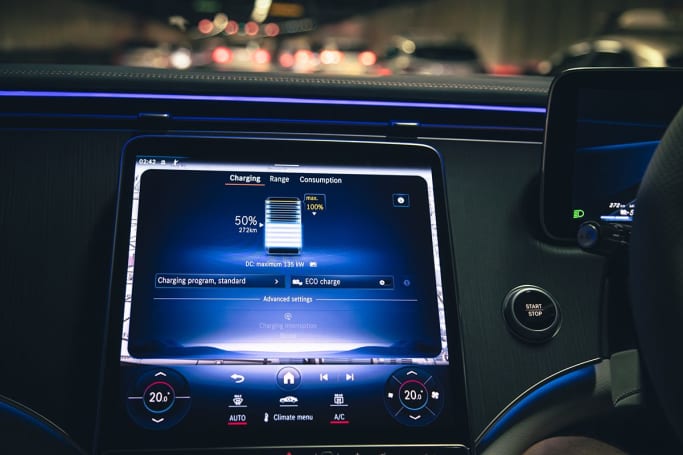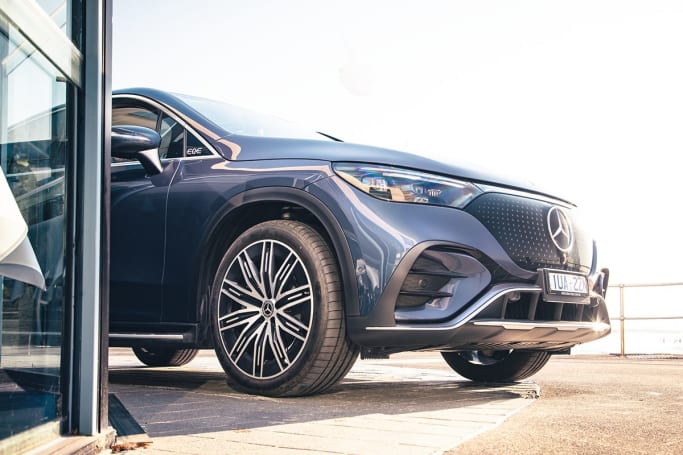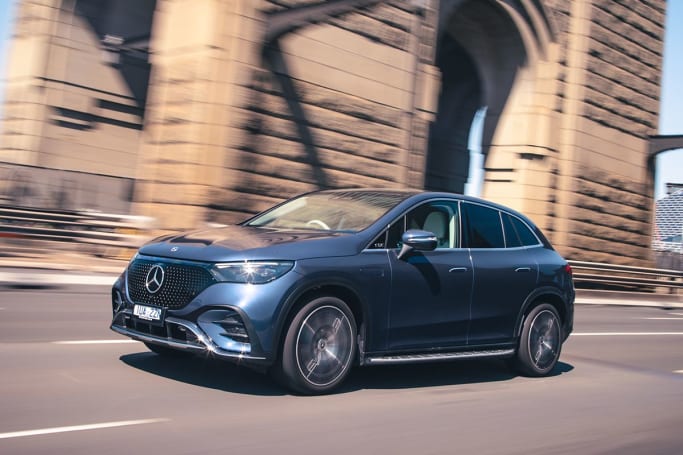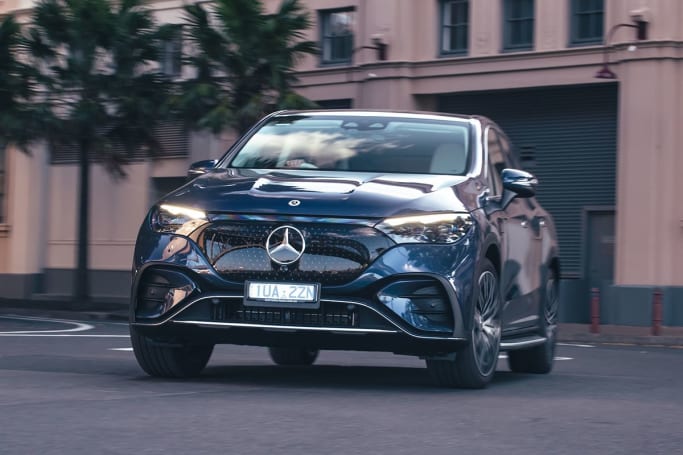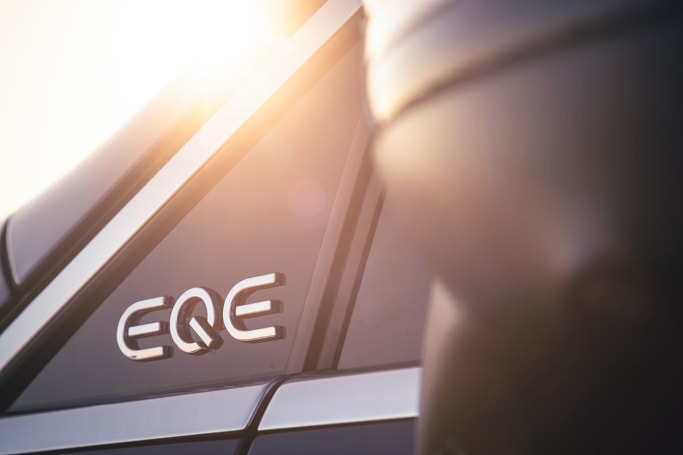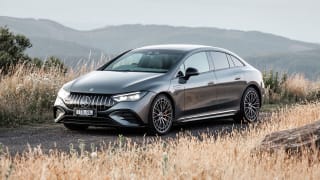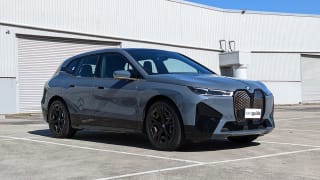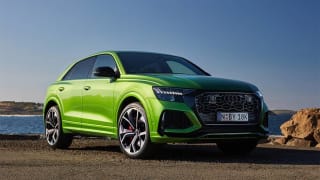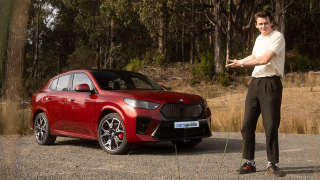Mercedes-Benz will offer the EQE as a range with four distinct models, each distinguished by its driveline and, therefore, its range and performance envelope.
As such, there’s a fairly large chunk of financial ground covered within the range, with the entry-level EQE300 costing $134,900, plus on-road costs.
The EQE350 adds a neat $10,000 to that to surface at $144,900 and the launch-only EQE500 costs $164,900 while you can order one.

The flagship AMG EQE53 will empty your wallet to the tune of $189,900.
All variants are well specified, of course, and that starts with embedded navigation with an augmented reality overlay, a panoramic sunroof, head-up display and, in Australia, AMG-line interior fittings.
The EQE350 adds to that with the second electric motor, all-wheel drive platform, and a camera view that shows the terrain directly in front of and below the car.
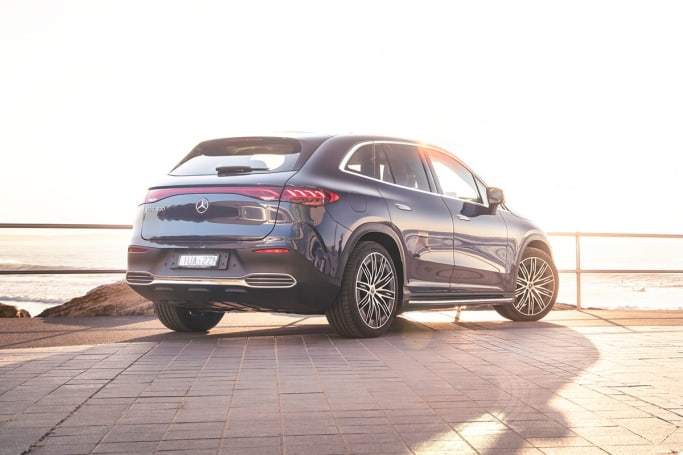
The EQE500 brings a slightly larger battery pack for improved performance, while otherwise sticking with the 350’s equipment list and specification.
The big hitter, the AMG 53 model, gains adaptive suspension, AMG-tuned suspension settings, Nappa leather steering wheel, cooled front seats, AMG exterior package, tow-away protection, the 'AMG Dynamic Plus' package which incorporates the 'Race Start' function, a higher top speed and an AMG sound experience which is played through the car’s stereo, and AMG-specific dashboard graphics.
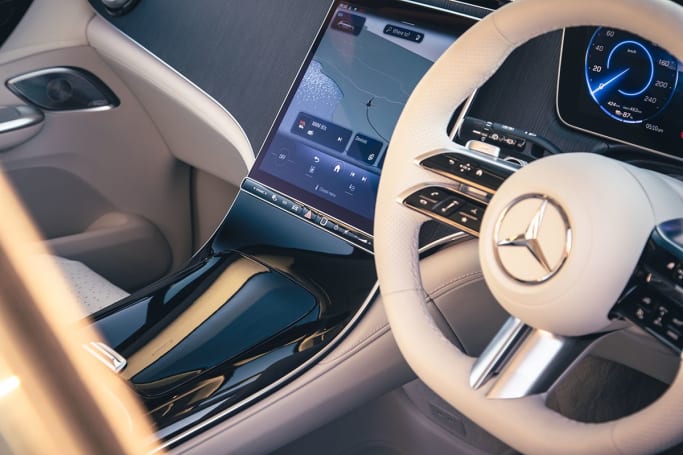
The soundscape also includes Burmester’s Dolby Atmos arrangement which aims to fill any sonic gaps in the cabin for a truly immersive experience.
Every EQE SUV variant also gets Benz’s 'Drive Assist Plus' package, leather trim, heated front seats, and a head-up display.
The only thing missing from the 300 model we’re testing (which isn’t available as an option) is the full-width animated dashboard that merges three screens into one even bigger one.



